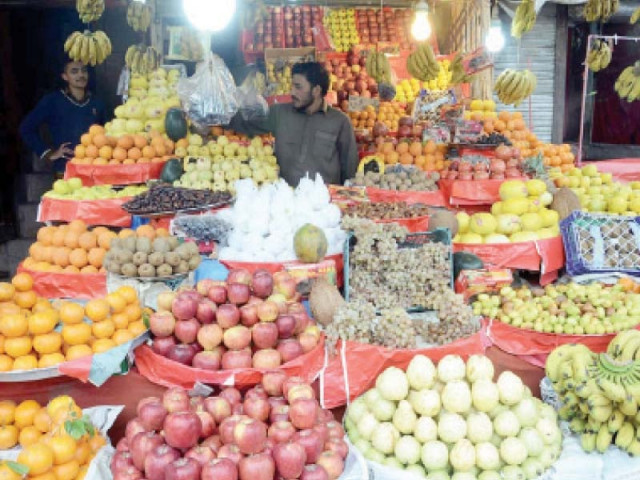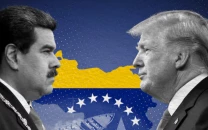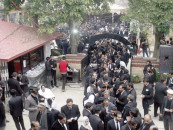Inflation hits half-century peak at 31.5%
Pakistan becomes 17th most expensive country in world

Inflation in Pakistan skyrocketed to half a century’s highest level of 31.5% -- becoming the 17th most expensive country in the world --after the government massively raised energy and fuel prices coupled with the adverse impacts of currency devaluation and imports at a halt.
Data released by the Pakistan Bureau of Statistics (PBS) on Wednesday suggested that the country was fast heading towards hyperinflation, with at least four consumer goods’ groups already in the territory of around 50% surge in prices on a yearly basis.
A plain reading of the inflation bulletin underscored that the life of a common Pakistani had become miserable, as there was hardly any consumable good whose price had not shot up in recent months.
The PBS announced its readings a day before an emergency meeting of the Monetary Policy Committee.
The huddle was held on the directives of the International Monetary Fund (IMF) to raise the interest rates.
Increasing the interest rates is one of the four outstanding issues that are hampering a staff-level agreement between Pakistan and the IMF.
The Consumer Price Index (CPI), the inflation monitor, rose to 31.5% in February against the same period last year, the PBS reported, beating the forecast of the finance ministry that was anticipating it at 30%.
It was the highest reading since 1973-74 when the index had been reported at 32.8%.
Pakistan’s inflation rate was the 17th highest in the world and it was likely to remain elevated because of the currency devaluation; hike in electricity and gas tariffs; and imposition of more taxes to meet the conditions agreed with the IMF.
The rupee has lost 16.5% of its value in the past one month.
However, the IMF still believes that somehow the government is involved in containing further devaluation of the local currency.
The factors that are contributing to the hike in inflation cannot be addressed by increasing the interest rates alone.
This is because the rising inflation is the outcome of the government and the IMF policy actions.
The IMF’s directive to Pakistani authorities to advance the Monetary Policy Committee meeting's schedule has weakened its case for freeing the central bank from the control of the finance ministry.
Core inflation, which was calculated after excluding the volatile energy and food prices, increased in February to 17.1% in urban areas and 21.5% in rural areas.
The core inflation was still higher than the central bank’s upward revised policy rate of 17%, indicating the underlining inflationary pressures.
Pakistan and the IMF have differences of opinion on the question of measuring the real positive interest rate yardstick.
The IMF is pegging it with headline inflation, which is 31.5%, while the government wants to see it in light of the core inflation that is up to 21.5%.
It was a rare month when except one group -- communication -- the inflation rate for all the others was in double digits.
Pakistan is now heading towards hyperinflation -- a situation when prices are out of control and in the territory of a 50% surge.
The inflation rate for the transport as well as the beverages and tobacco groups was at 50% in February in comparison with the same period a year ago.
For perishable food as well as recreation and culture services, the inflation rate was around 48%.
The inflation rate hit the roof in rural areas where it was recorded at 35.6% while it jumped to 28.8% in the cities, according to the PBS. There was a huge increase in the food inflation rate, mostly because of disruption of supply chains and weak checks.
Food inflation rose steeply to 47% in rural areas and it also significantly increased to 42% in cities last month, the PBS data showed.
The federal and the provincial governments are even unable to ensure the essential food supplies.
The prices are soaring at a time when the economy has significantly slowed down and poverty as well as unemployment are rising.
The prices of a majority of consumer goods remained out of the reach of the people, and a major surge was witnessed in rural areas where income levels were already low.
The food group prices surged by 45% in February against the same month a year ago.
There was an increase in both the perishable and non-perishable food items.
The surge came ahead of Ramazan -- indicating that the prices would further increase in the coming months.
This is because of the usual profiteering and hoarding during the holy month.
The prices of onions increased by 417% in cities and 517% in villages in February against the same month a year ago followed by an almost 100% increase in the rates of chicken.
Wheat -- an essential staple food of an overwhelming majority of Pakistanis -- has exceeded their reach.
Its rates increased over 82% while the flour prices also increased by 56%, according to the PBS.
Rice -- another staple food -- became expensive by 78% last month.
The prices of pulses jumped up by over 60% while vegetable ghee and cooking oil prices surged around 51% last month against a year ago, according to the PBS.
The prices of alcoholic beverages and tobacco groups soared by 49% on the back of heavy taxation on these items.
The transport group prices increased over 50% last month, as the petrol prices were higher by nearly two-third in comparison with a year ago.
The non-food inflation rate increased to 20.8% in cities and 25.3% in rural areas.
The prices of housing, water, electricity and gas fuels groups grew higher by 13.5%.
The government increased the gas prices by 63%, the inflation bulletin showed.
Textbooks became 74% expensive against a year ago, making education unaffordable.
For the July-February period of the current fiscal year, the data showed that the average inflation stood at 26.2%, which was more than double the official target of 11.5% for the current fiscal year set before the floods.
The average inflation rate in villages was nearly 30%.


















COMMENTS
Comments are moderated and generally will be posted if they are on-topic and not abusive.
For more information, please see our Comments FAQ